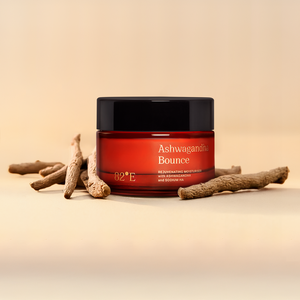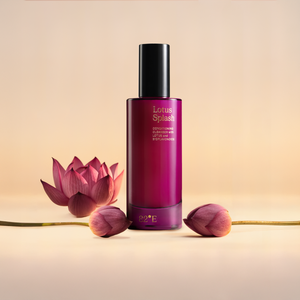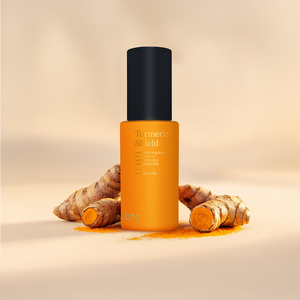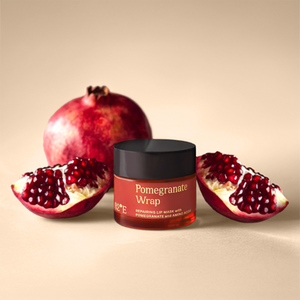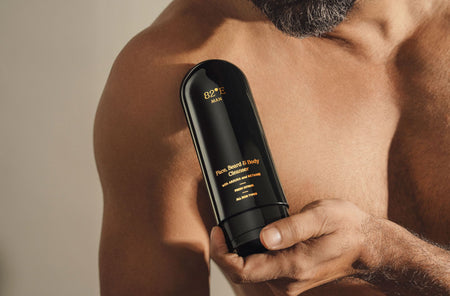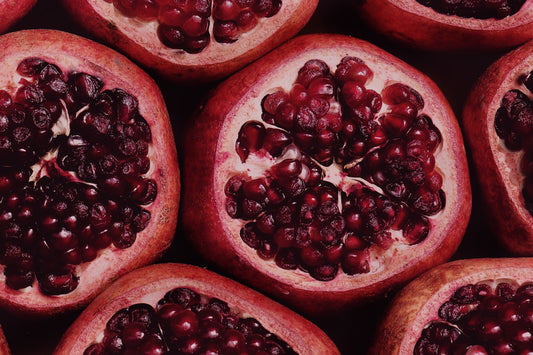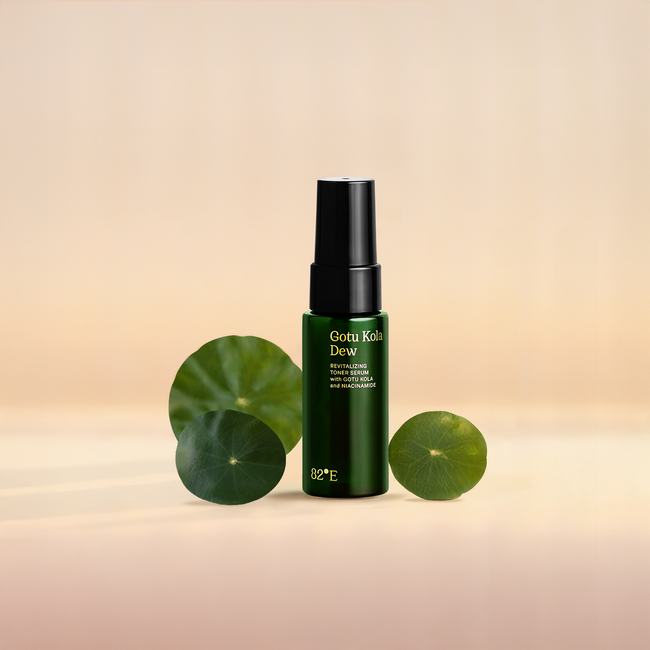
Niacinamide has been making waves in the skincare world for a few years now, and for all the right reasons. This powerhouse ingredient has become one holy grail solution for many who have been into effective skincare amid the constant lifestyle challenges and environmental damage. Let's understand this key ingredient, how it helps the skin and the most practical ways to include it in your skincare regimen.
What is Niacinamide?
With the scientific name Nicotinamide, 3-Pyridinecarboxamide, Niacinamide is an active form of niacin (vitamin B3). When applied topically, this necessary Vitamin has been linked to various dermatological therapeutic effects and mechanisms, ensuring various niacinamide skin benefits.
Niacinamide uses for skin have a huge list as it is thought to provide comprehensive advantages for skin health and has potent anti-inflammatory qualities that can help enhance skin texture, hydration, and functionality. Being a water-soluble ingredient, it can't be stored in the body; hence, it needs to be replenished from time to time through suitable skincare products.
Niacinamide Benefits For Skin
The niacinamide, which has always been essential for healthy skin, is now receiving the recognition it greatly deserves. Let's understand niacinamide uses for skin and why it has become such a buzzing name in the skincare world by understanding niacinamide skin benefits.
- Relief in Acne and Redness: Niacinamide has anti-inflammatory properties, which can assist in reducing redness brought on by skin conditions, including eczema, rosacea, and acne. As per skincare experts, niacinamide helps reduce sebum/oil production in the skin, which may contribute to lowering visible pore size, making your skin look smooth and healthy. Niacinamide also provides antibacterial effects, which improve congestion and calm breakouts. It is believed that mild acne can be reduced from its use. It can ease discomfort brought on by potent exfoliants that eliminate dead skin cells from the surface of your skin, such as retinol or glycolic acid.
- Enhanced Barrier Function and Hydration Restore: Niacinamide improves the skin's protective barrier, making it especially beneficial for skin prone to drying out. Niacinamide raises lipids (ceramides): a layer of water and oil that guards your skin and proteins, creating a powerful shield keeping irritants and pollution out and locking the moisture for long-term radiant and supple skin.
- Anti-ageing: Barrier compromise, which is typical in aged skin, can make your skin dull and worn out. It can increase sensitivity and irritability by making it easier for external assaults to penetrate the skin. Niacinamide, as previously stated, aids in restoring barrier function, boosting collagen production, restoring hydration and providing relief from anti-ageing skin symptoms, including wrinkles, fine lines, yellowing, elasticity, etc., giving you noticeably younger-looking skin.
- Reduces Pigmentation and Dark Spots: Niacinamide is dermatologically tested, addressing issues like anti-pigmentation and dark spots. When used daily, niacinamide has been found to illuminate skin tone and successfully lessen dark spots and blemishes. Niacinamide helps reduce melanin production, which is the main reason behind the dark spots and enhances collagen synthesis, leading to supple, clear and beautiful skin.
How to Apply Niacinamide to Your Skin?
As per dermatologists, after understanding your skin requirements, you should incorporate niacinamide in your skincare routine. You can use leave-on niacinamide products, such as toners, serums, or moisturisers, and apply them twice daily to enjoy better results.
How you apply niacinamide will greatly correspond to the cosmetics you will be using to feed your skin with this essential ingredient; for example, a toner is applied differently than a serum or moisturiser. Hence, read the instructions with the products to ensure the application process.
Talking about the standard skincare process, you may use a toner containing niacinamide, then a niacinamide serum or moisturiser after cleansing and patting your skin dry. It's ideal to use niacinamide serums, which are typically water-based, after cleansing and toning. Doing this can ensure optimum absorption and effectiveness for your skin. Later, you can use niacinamide moisturiser, sunscreen, and daily makeup.
Discover Gotu Kola Dew
Gotu Kola Dew is a fast-absorbing toner serum infused with the invigorating properties of gotu kola and niacinamide. Its multitasking formulation is clinically proven to leave you with bright and clear skin by providing an instant boost of hydration and reducing the appearance of pores(1)
Gotu Kola is known to aid in collagen production and minimize premature signs of aging like dull skin, dark spots, and fine lines. It is packed with antioxidants and helps the skin retain moisture.
Niacinamide helps in regulating melanin production to give skin an even tone. This versatile ingredient is known to regulate oil produced from the sebaceous glands and to help restore the skin’s natural barrier against moisture loss and dehydration.
(1)Based on a consumer study of 47 women in 4 weeks.
Niacinamide and Its Potency With Other Skin Ingredients
The most common query on niacinamide is whether it can be combined with other ingredients or not and what kind of effect such combinations can bring on the skin.
Yes, niacinamide can be combined with different skin-friendly elements, such as retinol, hyaluronic acid, peptides, ceramides, etc., to boost your skin. However, your skin will play the determiner in deciding the type of combination you should be using niacinamide within your skincare regime.
- Niacinamide + Salicylic Acid: For example, people with acne-prone skin should look for niacinamide with salicylic acid. niacinamide's ability to absorb excess oil and salicylic acid's capacity to break it down are combined to help keep pores clear and acne at bay. On the other hand, dry skin types people might want to use a niacinamide product with hyaluronic acid for extra moisturisation.
- Niacinamdie + Retinol: Another potent combination is retinol and niacinamide. The calming qualities of niacinamide can help counteract the unpleasantness and irritability that frequently accompany retinol's miraculous ability to reduce wrinkles and fine lines, helping reverse the signs of ageing.
On a general note, all skin-caring elements assist in the formation of a barrier for the skin to maintain the skin's overall well-being; therefore, combining niacinamides with these active ingredients will only have greater effectiveness in the long term. However, a new product should always be patch-tested first, and you should cease using it immediately if you have an adverse reaction.
What Should Not be Paired with Niacinamide?
Still a matter of contention, numerous skincare professionals believe that it is better to keep Vitamin C and niacinamide separate. Some think that putting niacinamide and Vitamin C on top of one another will cancel the benefits of each other on the skin as they both contain antioxidants. Some call this theory outdated and advise vice versa.
You can use both, but it is advisable for different timelines. Hence, your skin benefits both, or you can consult a dermatologist who can advise precisely after examining your skin.
Who Can Use Niacinamide?
Everyone and anyone can include niacinamide in their skincare regimen! It is suitable for all skin types, including those with sensitive skin. It benefits people with skin issues like redness and dark spots or who are more prone to breakouts.
To ensure maximum effectiveness, search for skincare products containing niacinamides that have completed clinical testing and have the right niacinamide concentration. A serum or moisturiser with niacinamide can give you tighter, younger-looking skin and even less breakouts.

